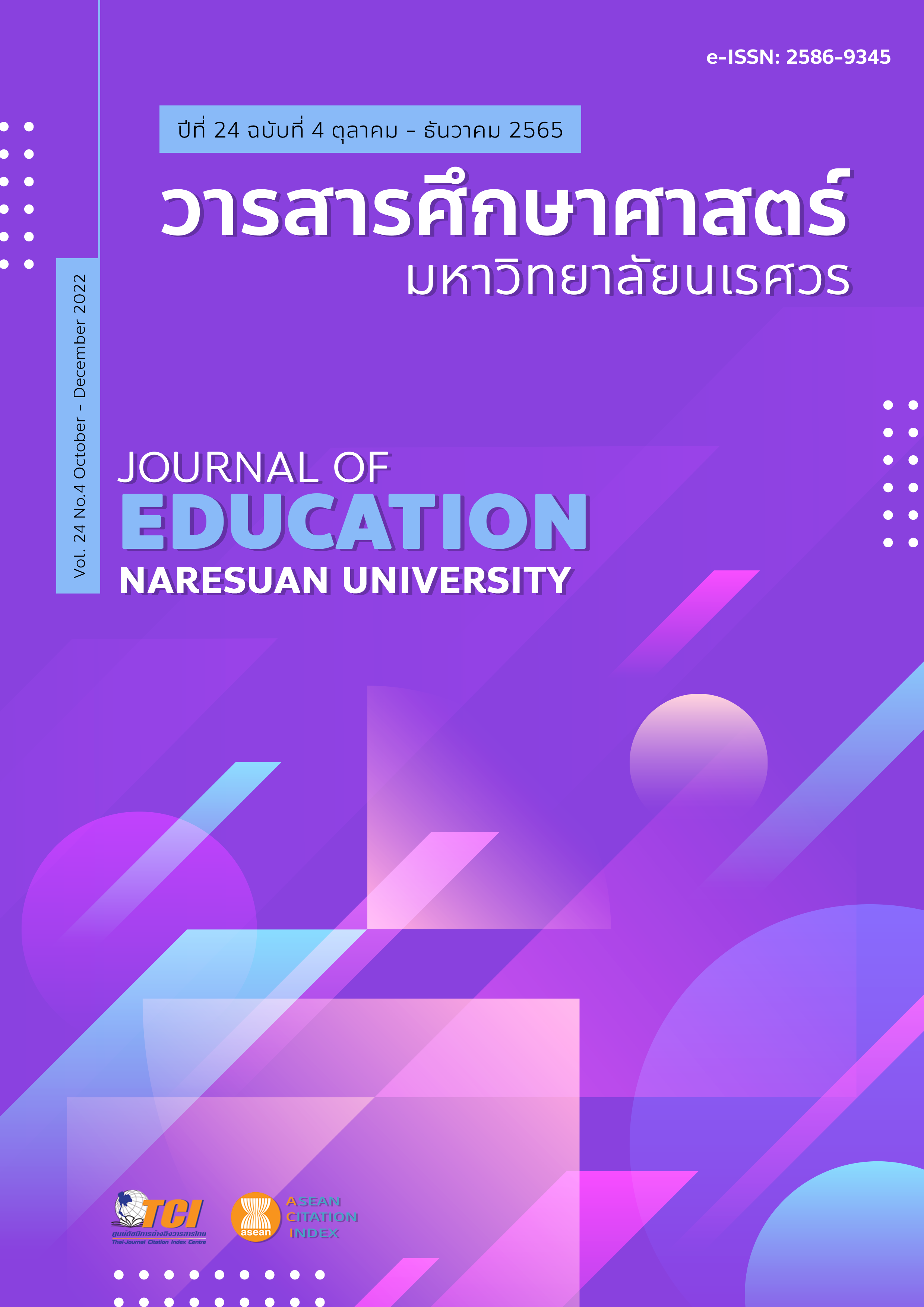DEVELOPMENT OF A MULTILEVEL MIXTURE IRT MODEL USING ALTERNATIVE IRT MODEL WITH GUESSING การพัฒนาโมเดลทฤษฎีการตอบสนองข้อสอบแบบผสมพหุระดับโดยใช้โมเดลทฤษฎีการตอบสนองข้อสอบทางเลือกที่คำนึงถึงการเดา
Main Article Content
Abstract
This study had three purposes: 1) to develop a multilevel mixture IRT model applied from the 2PLE model (MMix2PLE) and an appropriate estimation method; 2) to compare the accuracy of detection of latent classes between AIC and BIC for the MMix3PL and MMix2PLE models; and 3) to compare the precision of estimation: the latent classes, mean ability, and item parameters between the MMix3PL and MMix2PLE models. The data were simulated from the Monte Carlo method under 32 conditions (2 simulation models x 2 sample sizes x 8 candidate models), each condition was replicated 10 times, yielding a total of 320 data sets. The research results were as follows:
1. A Bayesian estimation algorithm for the MMix2PLE model developed in this research was found to be quite suitable. It was able to estimate unique parameter and recover parameter quite well under simulated conditions.
2. Comparison of the accuracy of detection of latent classes, AIC tends to be more accurate than BIC for both the MMix3PL and MMix2PLE models.
3. Comparison of the precision of estimation: the latent classes, mean ability, and item parameters, the MMix2PLE model tended to be more precise than the MMix3PL model, especially when the sample size was large (N = 2,500).
Article Details

This work is licensed under a Creative Commons Attribution-NonCommercial-NoDerivatives 4.0 International License.
The owner of the article does not copy or violate any of its copyright. If any copyright infringement occurs or prosecution, in any case, the Editorial Board is not involved in all the rights to the owner of the article to be performed.
References
Cho, S. J., & Cohen, A. S. (2010). A multilevel mixture model with applications to DIF. Journal of Educational and Behavioral Statistics, 35(3), 336-370.
Cho, S. J. (2007). A multilevel mixture IRT model for DIF analysis (Unpublished doctoral dissertation). Athens, GA: University of Georgia.
Choi, Y. (2014). Metric identification in mixture IRT models (Unpublished doctoral dissertation). Athens, GA: University of Georgia.
Kanjanawasee, S. (2012). Modern test theories (4th ed.). Bangkok: Chulalongkorn University Press. [in Thai]
Lee, S., & Bolt, D. (2018). An alternative to the 3PL: Using asymmetric item characteristic curves to address guessing effects. Journal of Educational Measurement, 55(1), 90-111.
Li, F., Cohen, A., Kim, S., & Cho, S. J. (2009). Model selection methods for mixture dichotomous IRT models. Applied Psychological Measurement, 33(5), 353-373.
Maier, K. S. (2001). A Rasch hierarchical measurement model. Journal of Educational and Behavioral Statistics, 26(3), 307-330.
Sen, S. (2014). Robustness of mixture IRT models to violations of latent normality (Unpublished doctoral dissertation). Athens, GA: University of Georgia.
Tay, L., Diener, E., Drasgow, F., & Vermunt, J. (2011). Multilevel mixed-measurement IRT analysis: An explication and application to self-reported emotions across the world. Organizational Research Methods, 14(1), 177-207.
Zhu, Z., Wang, C., & Tao, J. (2019). A two-parameter logistic extension model: an efficient variant of the three-parameter logistic model. Applied Psychological Measurement, 43(6), 449-463.


